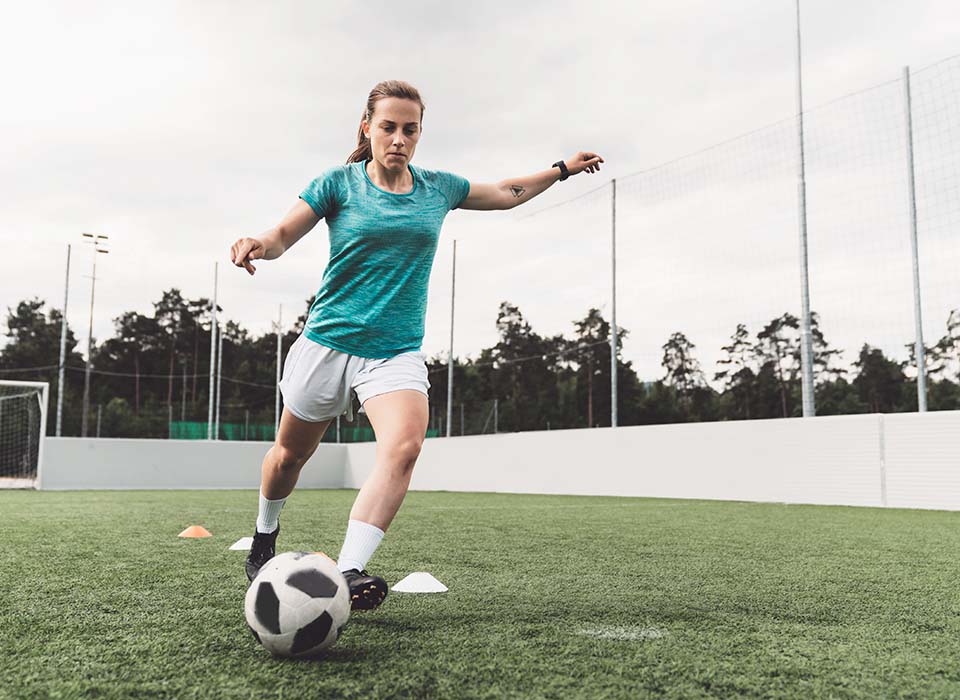The ACL is the anterior cruciate ligament, which runs between the femur (thigh bone) and tibia (shin bone) at the knee. Its main job is to provide stability to the knee. The typical ACL injury is caused by the knee hyperextending, which means the knee is stretched too far or is extended past the normal range of motion. The ACL does not tend to heal very well or very reliably, so treatment is needed.
Non-surgical treatment tends to be best for people who might be older or less active or who already have some arthritis. However, most people get better results with surgery.
Surgical Treatment
Historically, many knees have been stiff if surgery is performed soon after an ACL tear. Traditionally surgeons would wait at least six weeks before operating, but some newer research suggests that patients do better with earlier surgery, even as soon as less than 48 hours after injury. The most important thing before surgery is for the knee to have some range of motion and strong supporting muscles. This requirement means that every ACL case is different and every surgery ends up being on its own timeline.
The traditional approach is reconstructing the ACL and putting a new ACL in. In basic terms, it involves drilling some tunnels that go up through the tibia and femur and exit at the base of the ACL, threading a new ACL into those tunnels and attaching it securely on either side.
The new ACL is called a graft. Synthetic grafts are no longer used after they were found to be unreliable for active patients. Now there are two options, allografts and autografts. Allografts are grafts taken from a cadaver, or a dead person, are the least painful option, and heal slower. Autografts are taken from the patient themselves and are a tendon from a different part of the leg. It may take an allograft six months to fully heal while some types of autographs may heal in four months.
Each of the grafts has pros and cons. The allograft is most likely to stretch out or re-tear and so it is used very rarely. Hamstring tendons are a good graft but do tend to stretch out a bit over time. Patellar tendon grafts are very solid and heal well but come with the most pain and most difficult rehabilitation. The quadriceps tendon is an excellent graft that stays tight over time but is not as painful as the patellar tendon. How the graft is chosen depends on what sports you play, what your job is, and what your aspirations are. Your surgeon will discuss your case with you to make a personalized decision.
Physical therapy and rehabilitation after ACL surgery is designed to protect the graft while it heals. The rehab will be very gradual as it gets you back to sports and running.
Tips
1. If you are playing a sport or have an injury and you have the classic pop in the knee with pain and swelling, the most important things are ice, compression, and elevation. Then see a doctor for an x-ray and evaluation.
2. If you do have an ACL tear, prehab (prehabilitation, or physical therapy exercises before your surgery) and working on range of motion make an enormous difference in terms of your recovery and getting through the process.
3. If you have an ACL tear and you are trying to figure out how to treat it, the important thing is to honestly assess what your aspirations are for sports, what your job is, how much time can you afford out of work, and when you need to get back to your season to play.
4. Start rehab or physical therapy as quickly as possible. The ACL surgery causes your legs to lose muscle so the quicker you can start rebuilding those muscles to support the knee, the better.
Most importantly, once you have had your ACL fixed, work hard, follow the rules of rehabilitation, and look forward to getting back to your sports.
